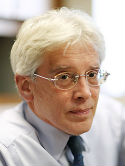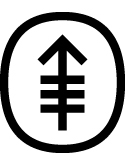Regimen-related toxicity of myeloablative chemotherapy with BCNU, thiotepa, and etoposide followed by autologous stem cell rescue for children with newly diagnosed glioblastoma multiforme: Report from the Children's Cancer Group Journal Article
| Authors: | Grovas, A. C.; Boyett, J. M.; Lindsley, K.; Rosenblum, M.; Yates, A. J.; Finlay, J. L. |
| Article Title: | Regimen-related toxicity of myeloablative chemotherapy with BCNU, thiotepa, and etoposide followed by autologous stem cell rescue for children with newly diagnosed glioblastoma multiforme: Report from the Children's Cancer Group |
| Abstract: | Background. The survival of children with glioblastoma multiforme (GBM) remains poor. In an effort to improve the cure rate of children with this disease, high-dose chemotherapy followed by autologous stem cell rescue (ASCR) has been evaluated. We report the regimen-related toxicity (RRT) and survival seen in 11 children with newly diagnosed GBM treated with high-dose chemotherapy on a Children's Cancer Group study (CCG-9922). Procedures. This phase 11 pilot study, intended to treat 30 patients, accrued 11 patients from July, 1993, to April, 1995. The pre-ASCR preparative regimen included BCNU 100 mg/m2 every 12 hr for a total of six doses on days -8, -7, -6; thiotepa 300 mg/m2/day on days -5, -4, -3; and etoposide 250 mg/m2/day on days -5, - 4, -3. All patients received delayed radiotherapy at a dose of 5,400 cGy to the primary site commencing on approximately day +42 after ASCR. Results. Five patients (45%) developed significant, nonfatal (grade III or IV) pulmonary and/or neurological toxicities. Three patients developed signs and/or symptoms of idiopathic interstitial pneumonitis. Eight patients (73%) have died, two (18%) of toxicity, and six (55%) of disease progression. Three patients (27%) achieved and remain in complete radiographic remission 2.9, 3.9, and 5.1 years from ASCR. One of these three, developed a lymphoblastic nonhodgkins lymphoma (NHL) 3.5 years post-ASCR. The survival rates for these 11 children at 1 year and 2 years are 73% ± 13% and 46% ± 14%, respectively. The progression-free survival rates at 1 year and at 2 years are 64% ± 14% and 46% ± 14%, respectively. Conclusions. We conclude that high-dose chemotherapeutic regimens followed by ASCR is a feasible treatment of childhood GBM. The BCNU-based preparative regimen utilized in this study was associated with prohibitive pulmonary toxicity. |
| Keywords: | adolescent; adult; cancer chemotherapy; cancer survival; child; clinical article; child, preschool; survival analysis; cancer surgery; survival rate; clinical trial; combined modality therapy; neurotoxicity; brain neoplasms; phase 2 clinical trial; bone marrow suppression; etoposide; blood toxicity; mucosa inflammation; antineoplastic combined chemotherapy protocols; stem cell transplantation; hematopoietic stem cell transplantation; cancer mortality; carmustine; thiotepa; childhood cancer; cancer regression; pilot projects; glioblastoma; glioblastoma multiforme; transplantation, autologous; high-dose therapy; stem cell rescue; humans; human; male; female; priority journal; article; carmustine toxicity |
| Journal Title: | Medical and Pediatric Oncology |
| Volume: | 33 |
| Issue: | 2 |
| ISSN: | 0098-1532 |
| Publisher: | Wiley Liss |
| Date Published: | 1999-08-01 |
| Start Page: | 83 |
| End Page: | 87 |
| Language: | English |
| DOI: | 10.1002/(sici)1096-911x(199908)33:2<83::aid-mpo4>3.0.co;2-g |
| PUBMED: | 10398181 |
| PROVIDER: | scopus |
| DOI/URL: | |
| Notes: | Article -- Export Date: 16 August 2016 -- Source: Scopus |
Altmetric
Citation Impact
BMJ Impact Analytics
Related MSK Work





